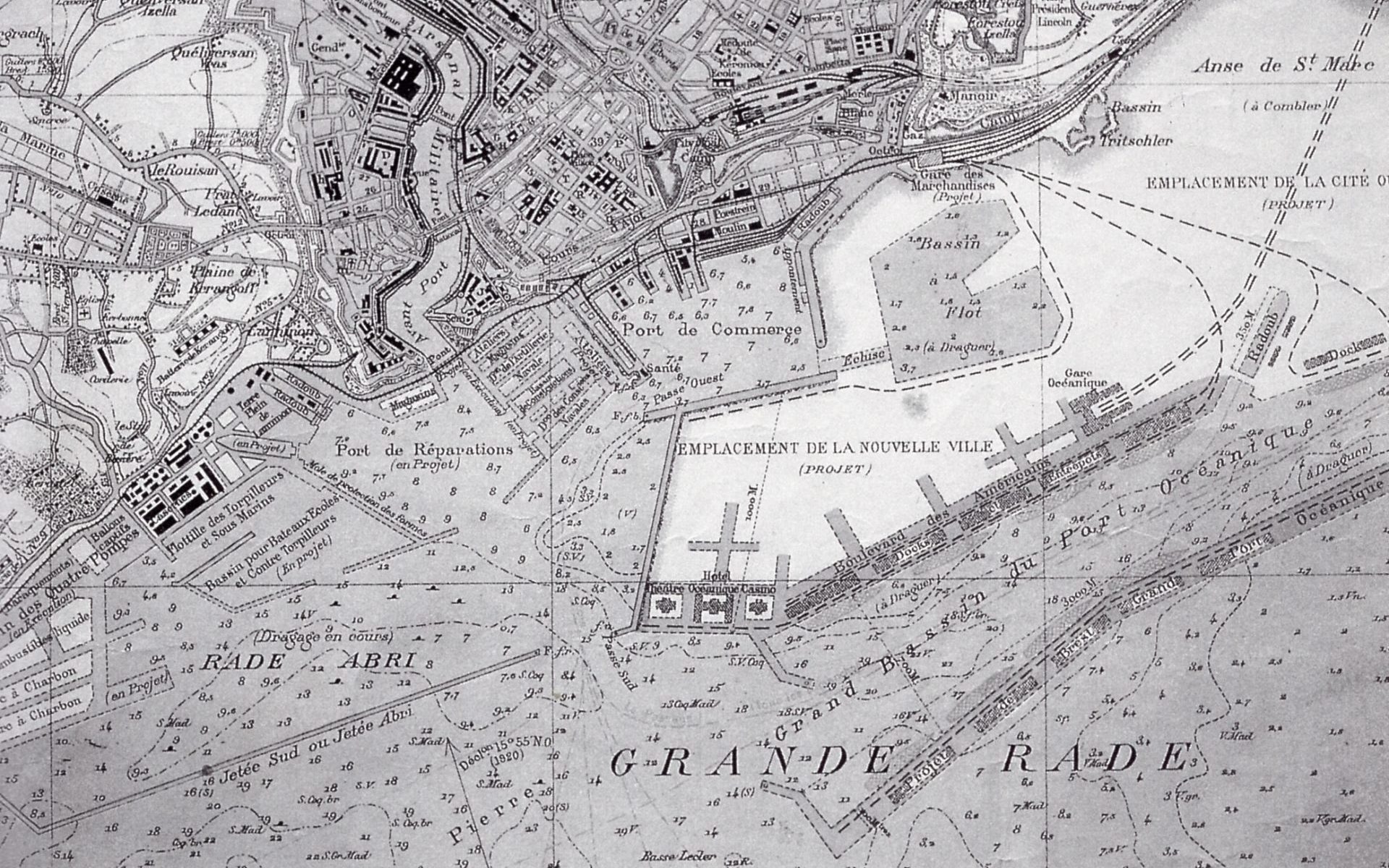Brest, oceanic port, plan marketed in 1919, coll. part.
The development of maritime trade between America and the Old Continent benefitted a number of Atlantic coastal cities. Le Havre, for example, became the main port for ships sailing from France to New York. Brest also dreamed of becoming a major transatlantic port able to welcome thousands of passengers heading to and from the United States.
Between 1883 and 1919, considerable efforts were made by the Chamber of Commerce to persuade the French government to allow Brest the privilege of operating a commercial line that would have enabled it to rival Panama and Colon in terms of maritime traffic. This would have given the city the opportunity to broaden its maritime industry, which was at that time centred around the Navy. This project aimed to improve the town’s road and rail networks, and finally allow it to expand its maritime domain.
It was in this context that the plan for Brest, the oceanic port, was born. One can conclude that this plan would have involved a major extension of the city towards the sea with facilities dedicated specifically to transatlantic traffic. Although this project never came to fruition, it was nevertheless presented in various tourist documents as a given. This attempt to force the hand of destiny was a dream that seemed to become a reality after the Great War, when the port of Brest welcomed the ships carrying American army troops.
Sonia de Puineuf

